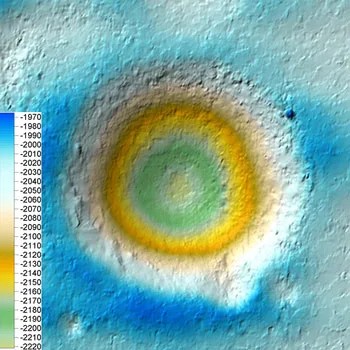Study of Planetary Processes
Study of Planetary Processes
Many types of planetary processes have occurred in the past or are currently active on the surface of the Moon, making it an accessible natural laboratory for investigating them. There is lasting geologic evidence of these processes, such as impact cratering, volcanism, space weathering, and tectonism. Present day processes such as active tectonism and seismic activity, mass wasting, and impact cratering make it an ideal target for investigating this surface activity. As a differentiated planetary body, evidence of magma ocean differentiation processes and magmatic activity are also preserved in the geologic record accessible to human and robotic explorers.

This 3D Digital Terrain Model (DTM) of a lunar crater was put together by photogrammetric processing of NASA’s Lunar Reconnaissance Orbiter Camera (LROC) Narrow Angle Camera (NAC) stereo pair images. The result allows scientists to measure and convert the information into this topographic map. Credit: NASA/GSFC/Arizona State University/Ohio State University
Keep Exploring




